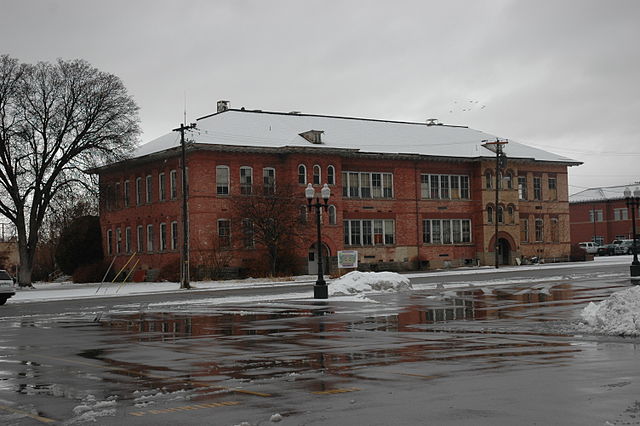
Greetings and Salutations;
Well, life is complicated, so I have a fair backlog of items to discuss, which, hopefully, will produce more frequent updates. It will be interesting to see what actually happens!
My topic of interest today is Education, as one might expect from the title! I was on Facebook, and was involved in a somewhat lengthy discussion about learning in America, and what the job of the school is. Also, of course, there were ancillary discussions of segregation, busing, and, Charter Schools. It is a subject which is important to me, perhaps because my father was a University Professor, and, I seem to have inherited his “Teaching Gene” so, I was motivated to spend a bit of time expanding on my reply here.
While I am not going to quote the entire conversation here, the trigger for me was a comment by one of the folks in the thread…who is kind of a Right-Wing Troll, and only at times adds to the conversation…Mostly he just is denigrating, and dismissive. His comment was this:
…the solution is not money. If the child wants to learn, he will learn…Stop blaming things on the schools.. how many kids are there that don’t give a shit… How many parents that put the time and encourage their kids to care? The school can only do so much
My reply to this was a somewhat shorter version of the following: Sir…your elitist attitudes are, basically, blaming the KIDS for not learning. First off…kids are a blank slate when they are born, and it is up to us, the adults, to write on that slate, giving them knowledge, and rules to live by (Which, hopefully include tolerance for other views, kindness, ethics and the like).
Secondly, let us look at the “kids who do not give a shit” that you refer to. Why is that? I submit that there are two major factors.
- Their parents taught them to have a contempt for education, probably by calling it ‘Elitist”. These are the same parents who say that you do not need an education to make it in the world. As the Poster pointed out, they also are less likely to support their kids education (even a pig with a head cold will find a truffle occasionally).
- In My view, a far more important factor is that the information being presented is not in a form that they can grasp.
As for this latter point, let me give you a specific example.

Some years ago, my older sister and her husband were working with a group that would pick up inner city youth, and take them to see a performance of one of Shakespeare’s plays. The plays were presented in a park, on a large stage, and were “modernized” in that, while the actors did not wear contemporary garb; there was a small rock band on stage that provided some interlude music, and such; and much of the scenery was provided by back-projected images on huge screens surrounding the back of the stage. The Dialogue, though, was, word for word, the Bard’s.
On the way to these performances, the kids were all the same, making smart ass remarks about how dull Shakespeare was, and that they would not be doing this if their teacher was not forcing them. To a person, their only exposure to Shakespeare had been from a quavery-voiced, old, teacher reading the censored text of the play to them as they sat in a classroom. So, I suspect they were planning to sleep through the performance!
This did not come to pass, though. Very quickly the play was the thing. It caught their attention, and drew them into it. They reacted to the events of the play as if it was real…so they had connected with, and were a part of that imaginary world for a while.
On the bus back home, the atmosphere was completely different. While A few of the kids had not become engrossed in the play and so were not that excited by it, a vast majority were very excited, interested, and moved by the performance. The experience of seeing the play as it was intended to be seen, on the stage, showed them that these were not the dry, boring facts that they had expected, but, complexity and drama and thought-provoking observations that drew them in, and made them think.
Did all these kids go on to become PhD’s? Probably not. Rather, in time, that experience faded for some and they never went to another play. But, many of them were reminded of their love of learning, and thirst for knowledge that had been eroded away…and motivated them to explore knowledge at greater depths. From the surveys taken by the group, many of the students showed a marked improvement in their test scores.
ALL kids when born, are filled with a thirst for knowledge. That is why babies push to start crawling; why they will play with items given them, manipulating them and even taste them. it is why they reach out to grab things! However, the rote learning and the factory assembly line that American schools fell into back in the 50s and 60s, tends to crush that interest in learning. Another failing of that plan is that it expects every child to learn the data presented in exactly the same fashion.
One of the valuable lessons that my parents programmed into me is that for a person to learn something that they will retain, one must give them a concrete handle that they already know well. When I am trying to explain a complicated issue to another person, I will chat with them to find something they are familiar with, and use that as a metaphor for the issue I am explaining. Since much of the time, I seem to be explaining how computers work, and that sort of thing, I do not expect them to become EEs, or Computer Science Wizards. I am more interested in them being comfortable with the overall picture of what is happening to produce a given result.
Even today, many public school systems do not have the resources to customize the lessons to the needs of the individual. Back in the dark ages of the late 1970s, I was working with “Computer Assisted Instruction” programming on the iron we had at hand. It fascinated me, and I saw the huge potential for radically changing the school systems for the better. Even the fledgling and rough tools I had at hand allowed me to easily create a tutoring program that would allow the student to progress at their own speed, and could present the data in any one of several optional ways until they “Got it”. I had really hoped that this would grow, especially with the advent and wide spread usage of the microcomputer that happened in the 1980s. One of the huge advantages that I saw was that it would allow students to not only learn the necessary basics, but, could easily allow them to explore a given topic more deeply.
Alas, this utopian vision did not come to pass. There were several factors involved in the failure of the idea.
- The cost for equipment and software, at such an early stage of development was prohibitive.
- Teachers and the NEA were, in most cases, very resistant to putting computers in the classroom. The excuses I heard ranged from “it is too difficult to do” to “This will allow school systems to fire teachers!” For me, “too difficult” is a euphemism for “I do not want to learn anything new”. That is understandable but is short-sighted, as I will touch on in a bit. As for the firing teachers, that is simply nonsense. Good teachers would always be in demand, as adding the computer was, in essence, the same as adding a Teacher’s Aid to the classroom.
- Far too often, a Principal would get the hots for this, and spend a LOT of money on a crude network of microcomputers. They would set aside a special room for the machines to live in, and would have a strict schedule for their use. However, this really minimized the usefulness of the computer system, as it so limited the time the students had ON the computers, it made no difference. I happen to know of one example where a small school purchased a bunch of networked, microcomputers at high cost, only to leave them locked away in their Shrine for most of the time. The classes only got an hour or two a week each to work on them, and that was optional. This system was used less and less, and finally junked, as it was several years old and technology had made it worthless. The net worth to the school was minimal, at best.
- In many schools the people setting up the CAI program were simply unqualified. In the above example, which, by the by, was at the K-12 school run by my church, the Principal got an architect that worked for the Tennessee Valley Authority in as the “Resident expert” to decide what computers to buy, how to set them up, and to create a program for their use. This person was a competent architect, but, alas, knew nearly nothing about CAI. I had to shake my head, because, at that point in time, I had been working in the I. T. industry for almost a decade, yet, I only found out about the project when it was announced, with great fanfare, in church one Sunday.
- There is often very little thought about the more important aspect of the program…which was to set up a program to integrate the computers into the learning plans of the school. Without a comprehensive plan that the teachers were, at least, comfortable with, the project is always doomed to failure.
Oh yes, the system, which the Principal had spent close to $12,000 on consisted of a TRS-80 computer, networked to a dozen or so TRS-80 workstations. It was one step up from inscribing Cuneiform on clay blocks and an abacus, but only JUST. This particular program hit most, if not all of the bullet points I listed above.

I want to finish off by touching on the topic of resources for Public Schools. Everywhere I have looked, I see a similar pattern. Some schools in the district have huge amounts of funding. others struggle by, as they are running on a shoe string. The effects of this are obvious, at least to me. The schools with greater resources get the better teachers, retain them longer, can afford to support continuing education for those teachers, and, have more tools for learning available to the students. The poorer schools are, as one might expect, just the opposite. Salaries are often lower, perks are minimal or non-existent, and teachers are either the ones simply holding on for retirement, or, are just out of college, and learning on the job. Very often, these schools are forced to hold bake sales and other fundraisers simply to keep alive. The better funded schools rarely have that need. In the case of the less well funded schools, there is always a huge turnover in staff…which leaves the school in an unsettled state of mind, hurts the “Corporate Memory” of the school, and means that the students are not being educated as well as they should be.
Now then…How to fix this? I, obviously, disagree that “Money is not the answer”. It is not the ONLY answer, but it is an important factor. Most school systems are funded through property taxes, perhaps supplemented by Federal Aid. Most districts apply those property taxes to the schools closest to the households that are being taxed. In the well off neighborhoods, those funds provide great schools, with plenty of resources. In economically challenged areas, there are fewer taxes collected, and so the schools struggle. Many of them are in hardly better shape that the old school image at the top of this entry! I propose to change this allocations of funding, so that all taxes and funds designed to support the school system be put into a single account. That money is then distributed to the schools for salaries and other necessary resources. I propose a modified form of “equal distribution”. Until the point is reached that the metrics for success of a given school are roughly the same for ALL schools throughout the district, I propose that the majority of the funding go to the challenged schools, to focus on building them up, and ensuring that a graduate from them will have an education that matches the quality of the best school in the district. Once that is the case, I would switch to an equal distribution of funds. Of course, in cases of serious issues with a given school arising, I would leave the actual distribution subject to modification by the complications of life! I would also go back to the good, old days of busing, to ensure that the racial mix in all schools is at least reflective of the district, and at best, is closer to equal. This report, from The Century Foundation shows that racially integrated schools produce much better educated citizens.
Note that this applies to the Public School system only…I will discuss Charter Schools and the like elsewhere.
God Help Us ALL!
Bee Man Dave
